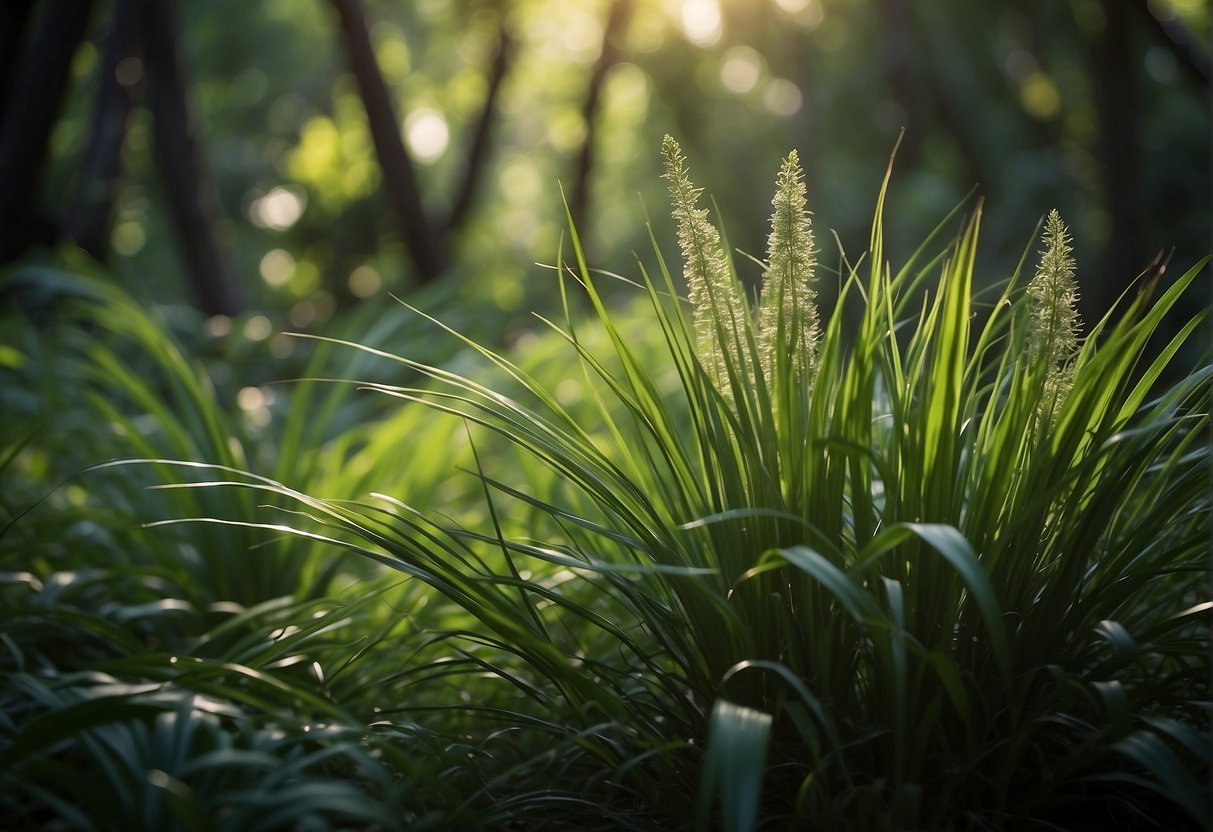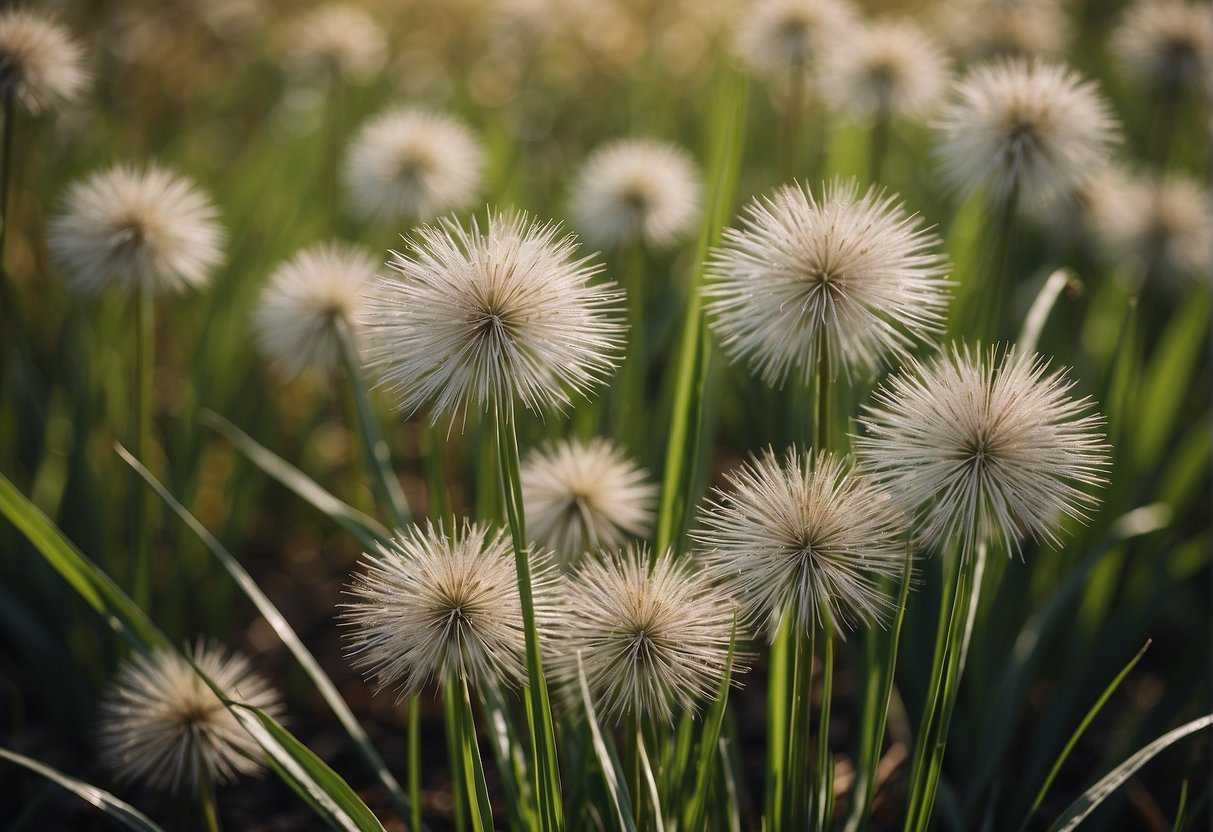Cymbopogon flexuosus Common Name: Unveiling Lemongrass Better Known Alias
Cymbopogon flexuosus, commonly known as East Indian lemongrass or Cochin grass, is a perennial grass belonging to the family Poaceae. Its aromatic properties and essential oils have garnered significant attention from both the industrial and the botanical community. Known for its citrusy fragrance, the plant is not only a culinary delight but also a focus of various studies for its medical and therapeutic potential.

Cymbopogon flexuosus is widely cultivated in tropical and subtropical regions around the globe, and its utility spans numerous industries. In traditional medicine, this plant has been employed for its antifungal and antibacterial characteristics, making its essential oil a valuable commodity. Its presence across various cultures as both a flavoring agent and a medicinal herb exemplifies its importance in both horticulture and ethnobotany.
Key Takeaways
- East Indian lemongrass is a key species within the Poaceae family, valued for its essential oil.
- Grown primarily in tropical climates, it is used across multiple industries for its aromatic oil.
- Cymbopogon flexuosus has significant cultural importance and is used in traditional medicine.
Overview of Cymbopogon Flexuosus

Cymbopogon flexuosus, known commonly as East Indian Lemongrass, is a species within the Poaceae family. We recognize it as part of the Poales order, which falls under the Monocots class within the Plantae kingdom. This particular species is well established within the Panicoideae subfamily and the Cymbopogon genus, known for its various essential oil-producing plants.
In terms of taxonomy, we classify Cymbopogon flexuosus among the higher-level clade of commelinids within the Plantae kingdom. The division Magnoliophyta, or Angiosperms, encapsulates this species and denotes it as a flowering plant. It thrives in warm temperate and tropical regions, renowned for its fragrant leaves that are widely used both culinarily and therapeutically.
The plant characteristically features slender, long leaves and is recognized for its diverse biological activities. We attribute to it a remarkable potential for therapeutic use, as indicated by scientific studies reporting on its immunomodulatory effects. Moreover, Cymbopogon flexuosus belongs to a genus that is gaining increasing attention due to its pharmacological importance and ethnopharmacological applications.
Botanical Characteristics

We begin our exploration of the botanically rich profile of Cymbopogon flexuosus with an examination of its morphology, growth habits, and reproductive biology.
Morphology
Cymbopogon flexuosus, or more commonly known as East Indian Lemongrass, is a perennial grass that exhibits slender, leafy stems. Leaves are linear and lance-shaped, forming clusters that appear lush and green. At the base, a short rhizome system exists, which gives rise to new shoots.
Growth Habit
This species thrives as a clump-forming grass that expands through its rhizome system, flourishing in tropical climates. As a perennial, it re-emerges each year, with leaves able to reach heights of up to 2 meters. The clumps intensify in density as the plant matures, demonstrating a vigorous growth habit.
Reproductive Biology
The flowering unit of Cymbopogon flexuosus is a complex structure known as the spikelet, which is the fertile flowering unit. In angiosperms like this, these spikelets contain fertile flowers capable of sexual reproduction. Surrounding the base of the flower, there is a ring-like structure called the ligule, which is prominent in monocots.
Habitat and Distribution

We discuss the habitat and native regions of Cymbopogon flexuosus, also known as lemongrass, along with its cultivation and spread across various parts of the world. Our focus on specific regions and cultivation practices provides an in-depth understanding of this species’ global presence.
Native Regions
Originating in the subtropical zones of Asia, particularly in India, Cymbopogon flexuosus flourishes in a warm climate. It's a species found across Thailand, Myanmar, and Sri Lanka. Commonly referred to as Malabar grass in parts of India, this grass thrives in regions of Nepal and New Guinea as well.
Cultivation and Spread
Lemongrass is extensively cultivated beyond its native zones, including countries like Madagascar, Java, and parts of China. As a cultivated species, it favors tropical environments and often grows in areas altered by human activity. Our cultivation methods have allowed it to prosper in various human-disturbed habitats around the globe.
Cymbopogon Flexuosus in Industry

We find Cymbopogon flexuosus, commonly known as east Indian lemongrass, chiefly cultivated for its essential oil. Our use of this plant spans across various sections of the industry, from the production of medicinal goods to the infusion of fragrance in consumer products.
Essential Oil Production
The primary industrial application of Cymbopogon flexuosus lies in the extraction of lemongrass essential oil. The oil yield from this plant is paramount to our considerations, as it determines the economic viability of cultivation. Typically, the first harvest of east Indian lemongrass provides us with the highest quality oil. Our distillation methods target compounds such as geraniol and Citrus limon for their aromatic and medicinal properties.
Usage in Consumer Products
Cymbopogon flexuosus essential oil finds extensive use in the manufacture of various consumer products. We incorporate this oil into soaps and perfumes for its refreshing citrus scent, which often evokes a clean and crisp aroma. In perfumery, the oil serves to prevent possible taints and is prized for contributing to complex aromatic profiles that are sought after in high-end fragrances.
Cultural and Traditional Significance

Cymbopogon flexuosus, commonly known as lemongrass, holds a rich heritage in various cultures. We find its roots deeply entrenched in traditional medicine and folklore across Asia and beyond.
Ethnobotanical Uses
In India, Cymbopogon flexuosus, also known as Cochin grass or Indian Verbena, is integral to traditional Ayurvedic medicine. We use lemongrass to treat a wide range of conditions, from fevers to digestive issues. Specifically, cultivars like 'Krishna', which is native to Assam and Burma, are renowned for their high-quality oil, often utilised in both medicinal and culinary practices. In the Caribbean, the plant is commonly referred to as fever grass, indicative of its use in treating fevers and other ailments.
Cymbopogon citratus and Cymbopogon nardus are other notable species within the Cymbopogon genus, each with their own unique uses. While C. citratus is widely cultivated and utilized for its flavorful leaves in teas and cuisines, C. nardus and Cymbopogon winterianus are valued for their essential oils, which are key components in the fragrance industry and also serve as natural insect repellents.
Symbolism and Folklore
Throughout various cultures, lemongrass has not just been a plant of practical use, but also one of significance in folklore and symbolism. In Asian cultures, its aromatic presence is often associated with cleansing and purity. The plant's ability to grow quickly and resiliently is sometimes seen as a symbol of personal growth and perseverance.
Cymbopogon travancorensis, a less commonly known relative within the genus, is found in the southwestern region of India, particularly in Kerala, and is part of the local folklore, attributed with health benefits and used in traditional healing ceremonies. The genus Cymbopogon, with species like C. flexuosus at the center, delivers a narrative that not only speaks of its practical applications but also its place in the cultural tapestry of the regions where it thrives.
Frequently Asked Questions

Lemongrass is a widely recognized and utilized herb, and Cymbopogon flexuosus is a particular species with specific attributes and uses. In the following section, we address the most common inquiries regarding this plant.
What is the common name for Cymbopogon flexuosus?
Cymbopogon flexuosus is commonly known as East Indian lemongrass.
In which family is Cymbopogon flexuosus classified?
Cymbopogon flexuosus belongs to the Poaceae family, which is the grass family.
What are the primary uses of Cymbopogon flexuosus in traditional and modern applications?
Traditionally, Cymbopogon flexuosus has been used for its aromatic oils and in herbal medicine. Today, it continues to be valued for its essential oil in perfumery, flavoring, and aromatherapy.
How do Cymbopogon flexuosus and Cymbopogon citratus differ?
Cymbopogon flexuosus and Cymbopogon citratus differ in their geographic origin and aroma profile; flexuosus is from India and emits a slightly different fragrance from the citratus, which is popularly known as West Indian lemongrass.
Can you provide tips on the correct pronunciation of Cymbopogon flexuosus?
The correct pronunciation of Cymbopogon flexuosus is sim-boh-POH-gon FLEK-soo-o-sus.
What are the benefits and uses of Cymbopogon flexuosus essential oil?
Cymbopogon flexuosus essential oil is known for its antiseptic, antimicrobial, and anti-inflammatory properties. It’s used in various products including soaps, cosmetics, and insect repellents.